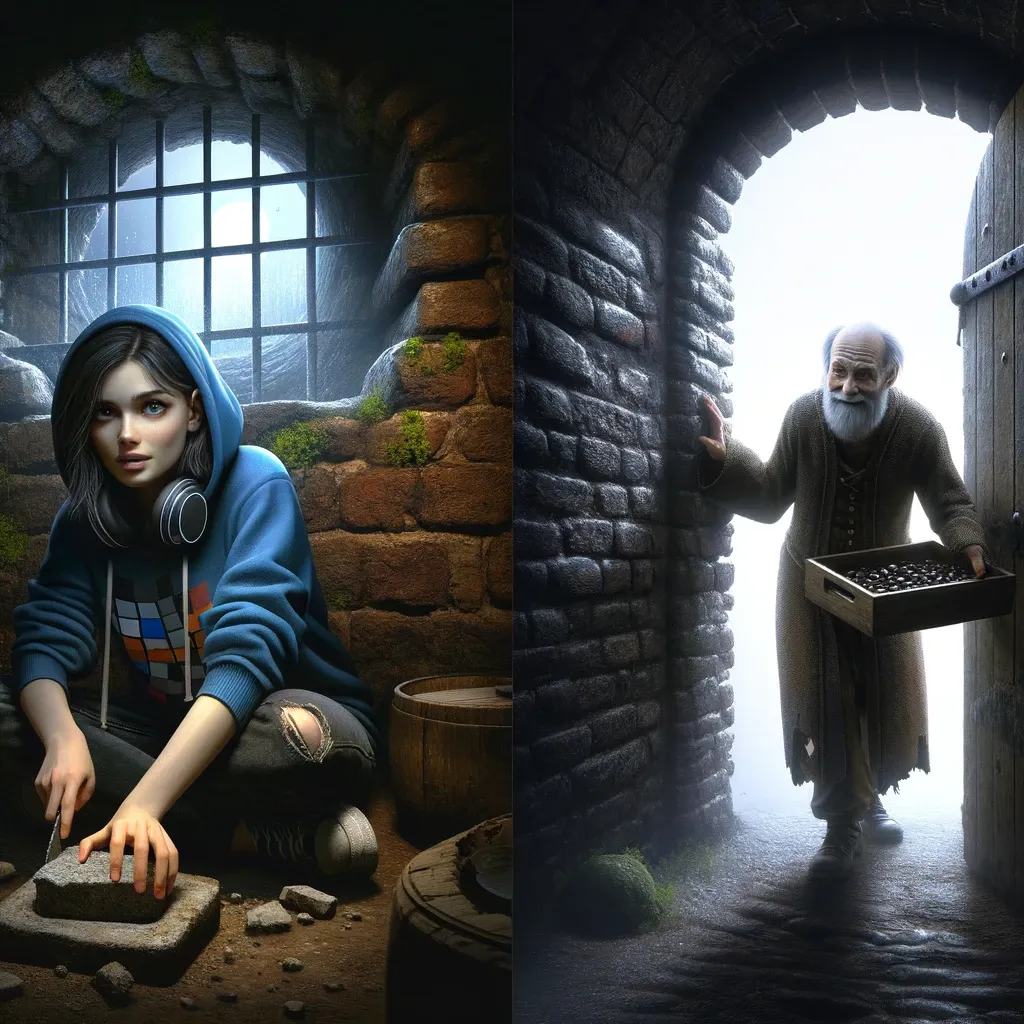Recent Posts
I explore how unreliable narrators can add complexity and intrigue to storytelling by deliberately misleading or withholding information from readers. Whether through personal bias, mental instability, deception, or limited understanding, these narrators force readers to question the narrative's credibility and draw their own conclusions. I examine how this technique fundamentally alters a story's tone compared to using objective or omniscient perspectives, creating deeper engagement through uncertainty.
This is The Adrenaline Machine, which focuses on creating relentless tension through cycles of progress and setbacks. Starting with an intense opening plunge and moving through nine distinct stages of advancement and regression, this framework keeps readers engaged by alternating between moments of hope and despair. The outline culminates in a pivotal pause that leaves everything hanging in suspense, maximizing dramatic tension.
This framework is for understanding how character wounds shape story arcs. By examining the relationship between traumatic past events and current behaviors, we can trace how wounds generate fears, false beliefs, and dysfunctional coping mechanisms. I provide targeted questions to help writers identify their characters' basic human needs, motivations, and conflicts that stem from these formative wounds. This flowchart approach helps create more psychologically complex character arcs.
I've developed a post-apocalyptic survival story focused on Eyvǫra Naldi and 385 other passengers stranded in the air above a devastated Atlanta after an asteroid impact. The synopsis follows their harrowing decision to attempt a landing and subsequent struggle to survive in the ruined city. Through Eyvǫra's emergence as a leader, I explore themes of human resilience and group dynamics in the face of catastrophe. The story asks whether unity can prevail when civilization crumbles.
This is a tool to help writers identify their characters' core internal conflicts by examining the interplay between emotional wounds, outer goals, and inner needs. By understanding how past trauma shapes current motivations, writers can develop more compelling character arcs. This framework helps uncover the deeper psychological struggles that drive character growth and plot development.
I reflect on the unique value of being a beginner in your craft. While many rush to move beyond this stage as soon as challenges arise, I emphasize how the early learning phase offers special opportunities for growth and development that become rarer as you advance. I encourage writers to embrace and appreciate their beginner status, as each new level of mastery makes transformative growth spurts increasingly difficult to achieve.
In this daily reflection post, I share both the challenges and bright moments of my day. Despite dealing with chronic pain, late starts, and worried moments, I found joy in unexpected places - like some meaningful progress with my work. I'm learning to acknowledge both the ups and downs, celebrating small victories like posting content even when I don't feel like doing it. This kind of honest daily check-in helps me stay grounded and might become a regular feature of my blog.
I've created a comprehensive outline for a mystery/crime story structure, detailing every major beat from the initial "Act of Depravity" through to the final resolution. Each section serves a specific purpose in building tension, developing investigation threads, and maintaining reader engagement. The outline includes multiple red herrings, false objectives, and plot complications to keep both protagonists and readers guessing. I pay particular attention to character development through the investigation process, while emphasizing the importance of consistent clue placement and logical resolution. This framework helps writers craft mysteries that balance procedural elements with emotional depth.
I explore different forms of loss and their impact on character development, from death of loved ones to loss of freedom or innocence. By examining how these experiences connect to basic human needs like self-actualization and belonging, I provide a framework for understanding character motivation and growth through grief. I break down the preparatory steps characters might take to overcome loss, potential sacrifices they'll face, and roadblocks they'll encounter, while emphasizing the high stakes of failing to process grief properly. This helps writers craft more authentic character arcs around themes of loss and recovery.
I've crafted a suspense-filled story synopsis about Havann Norris, a skilled gamer who wakes up trapped in a mysterious cell after a marathon gaming session. By blending elements of gaming culture with real-world peril, I explore how her virtual skills might translate to actual survival scenarios. The enigmatic old man's cryptic warning about "next time" sets up intriguing questions about the nature of her captivity and suggests this might be more than a simple kidnapping. Through Havann's perspective, I frame her predicament as the ultimate escape room challenge.
I address the important topic of diverse representation in literature, particularly focusing on remixes and retellings that incorporate marginalized perspectives. Through my own experience as someone from marginalized communities, I explain why seeing ourselves reflected in literature matters so deeply. While some readers may resist these new interpretations, I emphasize that more inclusive storytelling enriches literature without diminishing existing works. Books that aren't written for you don't take anything away - they simply give others the joy of recognition that many readers have long taken for granted.
I've developed a story examining institutional failure and systematic abuse through the character of Zivit Suhny, a student pushed to her breaking point after years of trauma at Gregory Hautum High School. Following her sexual assault by a history teacher and subsequent gaslighting by school administration, my narrative explores how continued institutional betrayal and denial can lead to devastating consequences. Through Zivit's story, I confront difficult themes about power dynamics, accountability, and the dire effects of ignoring victims' voices in educational settings.
I've developed a comprehensive exercise exploring how cataclysmic events can reveal deeper character truths, even for stories dealing with smaller-scale conflicts. Through examining characters' responses to scenarios like asteroid impacts, plagues, or alien invasions, we can uncover vital insights about their values, relationships, and decision-making processes. I provide specific prompts about survival choices, moral dilemmas, and emotional arcs, along with tools like character journals and scene emotion maps to help writers dig deeper into their characters' core nature. By understanding how characters react when everything falls apart, we can better portray their responses to any level of conflict.
In this daily reflection post, I share both the challenges and bright moments of my day. Despite dealing with chronic pain, late starts, and worried moments, I found joy in unexpected places - like some meaningful progress with my work. I'm learning to acknowledge both the ups and downs, celebrating small victories like posting content even when I don't feel like doing it. This kind of honest daily check-in helps me stay grounded and might become a regular feature of my blog.
I've created an exercise focused on identifying and breaking troublesome writing habits, drawing from my own experience with overemphasizing physical movement and overusing words like 'glance.' By prompting writers to identify their worst habits, most used words, writing crutches, and reliance on glue words, I provide a framework for more conscious writing choices. Through deliberately writing without these familiar patterns, we can discover whether they're truly necessary or just comfortable fallbacks, ultimately strengthening our storytelling craft.
I've crafted a love story with an immortal twist, following MacColl Albers, a man who's lived through millennia of human history only to find real purpose when he meets art historian Isolde Ciernik. When she mysteriously disappears, the story transforms into a tense investigation that forces Mac to confront both his painful past and dangerous present. Through Mac's desperate search for Isolde, I explore themes of eternal love, the burden of immortality, and how finding the right person can give even an endless life new meaning. The story challenges whether love can truly conquer time and whether someone who's lost everything can find the courage to risk their heart again.
Here, I've created the opening scene of a first contact story that transforms an ordinary night into humanity's first alien encounter through the eyes of teenager Esma and her younger brother Wyr. When they discover a mysterious silver sphere in their backyard - just the first of many raining from the sky - Esma must quickly shift from curious observer to family protector. By focusing on these crucial first fifteen minutes of an alien invasion through a teen's perspective, I explore how quickly ordinary life can transform into extraordinary circumstances, and how responsibility can fall on unexpected shoulders in times of crisis.
With my "Shadows of Deceit" outline, you’ll have a chance to write a book where readers will be immersed in the dark and morally complex world of crime noir, where a determined detective navigates a treacherous landscape of deception, intrigue, and personal redemption.
Injuries add realism and grit. Let’s face it, how many action movies have we watched where the heroes walk into a haze of bullets and come out on the other side completely unscathed? Come on, you are capable of better than that boring schtick. Ultimately, injuries are story catalysts. They inspire change, though that change is almost universally unwelcome and painful on both physical and psychological levels. Moreover, injuries and pain show us what characters are truly made of. Now, there are six distinct phases of the injury plot. Here they are, broken down by individual section.
In this daily reflection post, I share both the challenges and bright moments of my day. Despite dealing with chronic pain, late starts, and worried moments about my four-year-old's health, I found joy in unexpected places - like a rare "I love you" from my teenager and some meaningful progress with my work. I'm learning to acknowledge both the ups and downs, celebrating small victories like managing to eat a bit more than usual. This kind of honest daily check-in helps me stay grounded and might become a regular feature of my blog.






